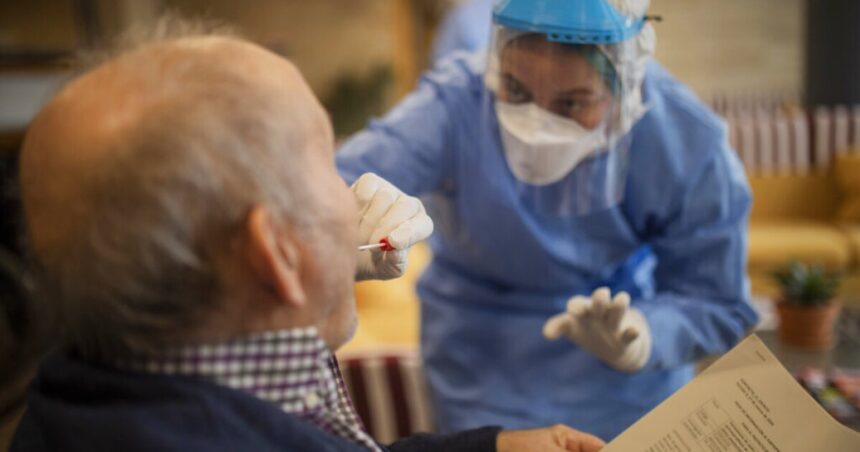As more Americans embark on summer vacations and gather indoors during heat waves, COVID-19 infections are once again increasing.
The Centers for Disease Control and Prevention reports that infections are on the rise or likely increasing in 39 states. While the agency no longer tracks the number of coronavirus cases, it now relies on data from emergency department visits and wastewater testing in each state.
Most of the states where infections are increasing are located along the coasts, including California, Oregon, Washington, Florida, Maryland, Virginia, and the Carolinas. Additionally, some states in the Northeast, Deep South, and Great Lakes region have also been identified as areas where infections are growing.
Based on the data, California, Arizona, and Florida have the highest probability of experiencing an increase in infections.
The CDC reports that no states are seeing a decline in cases, but some states like Alaska, Nevada, Utah, Oklahoma, North Dakota, Iowa, Tennessee, Ohio, and Connecticut have stable numbers.
Test positivity for COVID-19 increased from 5.4% to 6.6% in the second week of June, according to CDC data, indicating the beginning of the anticipated summer wave of infections.
Related Story: FDA reverses course, calls for vaccines for fall 2024 to target newer COVID-19 strain
Historically, coronavirus cases tend to spike in the summer due to travel and other factors.
The primary variant currently predominant in cases across the country is KP.3, a member of the FLiRT variant group that has been the dominant variant for several months, as per CDC data. This group of mutations, which includes variants starting with KP or JN, is characterized by a specific position in the spike protein, according to Johns Hopkins Bloomberg School of Public Health.
CDC guidance for preventing COVID-19 infection and limiting spread still includes getting vaccinated, disinfecting and ventilating your home, practicing social distancing, and wearing a mask. If infected, the latest guidance recommends staying home and away from others until symptoms improve and there is no fever for at least 24 hours, with continued precautions for the next five days.
The Centers for Disease Control and Prevention
Related Story: Dr. Anthony Fauci testifies before House panel over COVID-19 origins, pandemic response





